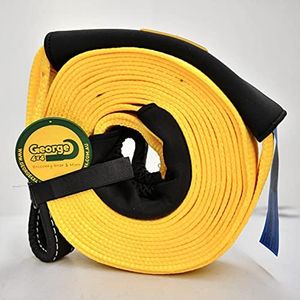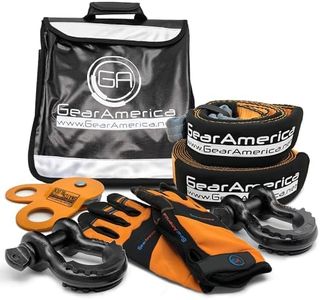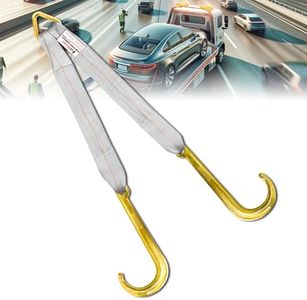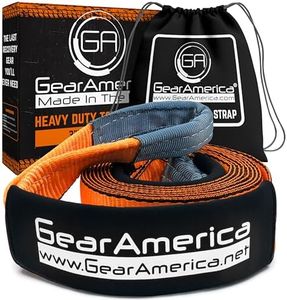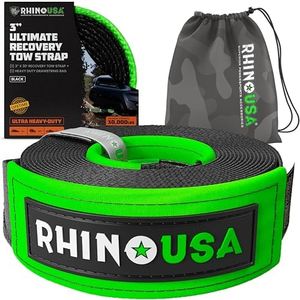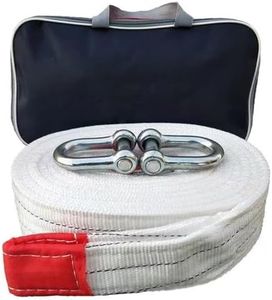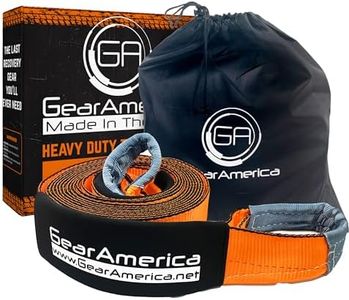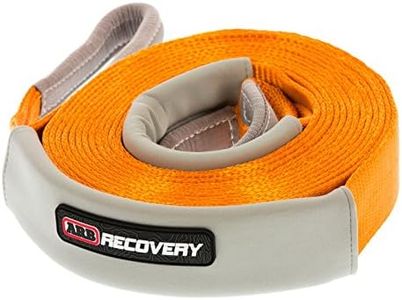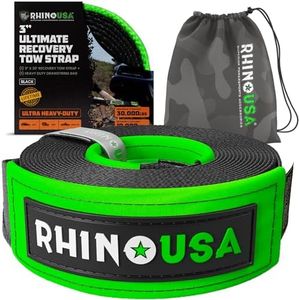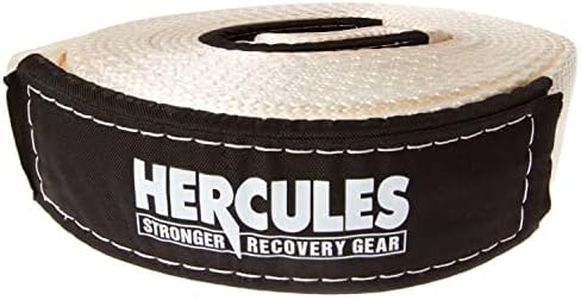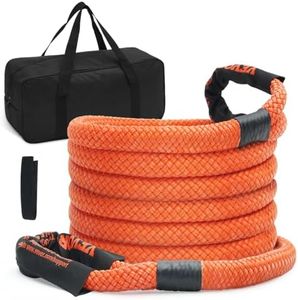We Use CookiesWe use cookies to enhance the security, performance,
functionality and for analytical and promotional activities. By continuing to browse this site you
are agreeing to our privacy policy
10 Best Tow Straps
From leading brands and best sellers available on the web.Buying Guide for the Best Tow Straps
When choosing a tow strap, it's important to focus on matching the product’s capabilities with your typical towing needs. Tow straps are essential tools for pulling vehicles out of tough spots or moving heavy loads. The key is understanding how different specs affect performance and safety, and making sure you select one that isn’t just strong enough, but also practical for how you’ll use it most. Don’t get overwhelmed by all the options; if you break down each specification, you’ll be able to find a tow strap that’s just right for your needs.Load Capacity (Breaking Strength)Load capacity, sometimes listed as breaking strength, tells you the maximum force a tow strap can handle before it breaks. This is crucial for safety—using a strap that can’t handle your vehicle’s weight can be dangerous. Light-duty straps (usually up to 5,000 lbs) are good for towing smaller cars, while medium-duty (5,000–10,000 lbs) suit SUVs, and heavy-duty (over 10,000 lbs) are made for trucks and larger vehicles. To pick the right one, find your vehicle’s weight and choose a strap with a breaking strength at least twice that amount for extra safety.
Strap LengthThe length of the tow strap determines how much distance you’ll have between vehicles during towing. Short straps (10–15 feet) are handy for tight situations, while longer straps (20–30 feet or more) allow more space between vehicles, which can be safer and more flexible off-road. However, very long straps can be more difficult to control. Think about where you’ll be towing—tight spaces or open areas—and your experience level to choose a length that fits the situations you’ll face.
Strap WidthStrap width influences both strength and how the strap handles. Wider straps are generally stronger and distribute pressure more evenly, reducing the risk of damage to recovery points, but can be bulkier and harder to handle. Straps range from about 1 to 4 inches wide. Smaller vehicles may only need a 1- to 2-inch strap, while trucks or off-roaders might be better suited with 3 or 4 inches. Match the width to the capacity you need and consider how easy it will be for you to use and store.
MaterialMost tow straps are made from either polyester or nylon. Nylon stretches more, which can make recovery smoother as it absorbs shock, but it can also store more energy if it snaps. Polyester is less elastic, giving a more stable and predictable pull. Nylon is popular for off-road recovery, while polyester is often chosen for towing on paved roads. Think about whether you’ll need shock absorption or a firmer pull, and choose the material that suits your towing situations best.
End FittingsThe ends of the strap usually come in either hooks or loops. Hooks are quicker to attach, but loops can be safer and more versatile when connecting to different towing points. Some straps have reinforced loops for strength, while hooks should be sturdy and secured to prevent slipping. Consider the type of towing points on your vehicle and what you find easier or safer to use, and choose accordingly.



